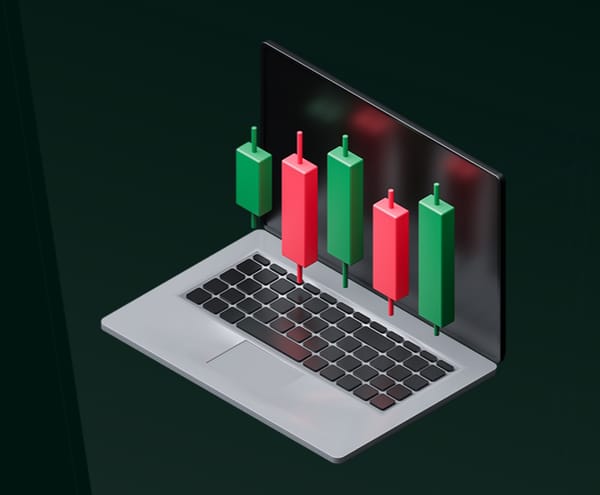Understanding LP Token Burning on Moonshot

DEX Screener, the popular data aggregator for decentralized exchanges, has launched its own token launchpad called Moonshot. This Solana-based platform has already made waves in the crypto community, with over 7,000 meme coins created in just one day. One of the points sets Moonshot apart is its approach to liquidity provision, particularly its automatic burning of Liquidity Provider (LP) tokens. This article aims to demystify this concept and its implications for traders and investors.
What are LP Tokens?
Before diving into the burning mechanism, it's crucial to understand what LP tokens are. In traditional Decentralized Exchanges (DEXs), when users provide liquidity to a trading pair, they receive LP tokens in return. These tokens represent their share of the liquidity pool and can be redeemed later to withdraw their portion of the pool.
For example, if you provided 10% of the liquidity in a SOL/USDC pool, you would receive LP tokens representing that 10% share. You could later exchange these LP tokens to reclaim your portion of the pool, including any fees earned.
The Moonshot Approach: Automatic LP Token Burning
Moonshot introduces a novel approach to liquidity provision and token launches. Here's how it works:
- Token Creation: Anyone can create a new token on the platform.
- Liquidity Threshold: The platform waits until investors have contributed 500 SOL to the new token.
- Pool Creation: Once the threshold is met, Moonshot automatically creates a liquidity pool on the Raydium DEX.
- LP Token Generation: The system generates LP tokens representing the entire liquidity pool.
- Immediate Burning: Crucially, Moonshot immediately burns these LP tokens.
Why Burn LP Tokens?
The immediate burning of LP tokens has several significant implications:
1. Prevention of "Rug Pulls"
In the crypto world, a "rug pull" occurs when project developers or large liquidity providers suddenly withdraw all liquidity from a pool, leaving other investors unable to trade. By burning LP tokens, Moonshot makes it impossible for anyone, including the token creators, to suddenly drain the liquidity pool.
2. Guaranteed Liquidity
Since the LP tokens are burned, the liquidity becomes a permanent feature of the token's ecosystem. This ensures that there will always be some level of liquidity for trading, even if the token's price experiences significant volatility.
3. Fair Launch
The Moonshot mechanism creates a level playing field. No single entity, not even the token's creator, has special access to the liquidity pool. This can increase trust in new projects launched on the platform.
4. Reduced Manipulation Risk
Large liquidity providers often have the power to significantly impact token prices by adding or removing liquidity. The burning mechanism eliminates this form of potential market manipulation.
How Does This Affect Trading?
While the LP token burning mechanism provides several benefits, it's important to understand its effects on trading:
Price Impact
When large buy or sell orders are placed, they will still impact the token's price. The difference is that this impact cannot be magnified by sudden liquidity removals.
Arbitrage Opportunities
If the token's price on Moonshot diverges significantly from other markets, arbitrage traders can still profit by buying low on one platform and selling high on another. This helps to maintain price equilibrium across different exchanges.
Long-term Price Discovery
The permanent liquidity ensures that price discovery can continue even during periods of low trading volume or market stress.
Potential Drawbacks
While the LP token burning mechanism offers many advantages, it's not without potential drawbacks:
Inflexibility
Once the liquidity is locked, it cannot be easily adjusted to changing market conditions. In traditional DEXs, liquidity providers can add or remove liquidity based on their assessment of market needs.
Potential for Inefficient Capital Use
The locked liquidity might not always be at the optimal level for the token's trading volume. In some cases, there could be more liquidity than necessary, leading to capital inefficiency.
Comparison with Traditional DEXs
To fully grasp the implications of Moonshot's approach, let's compare it with traditional DEXs:
- Liquidity Control:
- Traditional DEX: Liquidity providers have full control over their funds.
- Moonshot: Liquidity is permanently locked in the pool.
- Risk of Sudden Liquidity Loss:
- Traditional DEX: High risk, especially for new or small-cap tokens.
- Moonshot: Virtually eliminated.
- Liquidity Provider Rewards:
- Traditional DEX: LPs earn fees proportional to their share of the pool.
- Moonshot: No direct LP rewards, as there are no individual LPs.
- Market Making:
- Traditional DEX: Often relies on professional market makers.
- Moonshot: Built-in liquidity eliminates the need for dedicated market makers.





